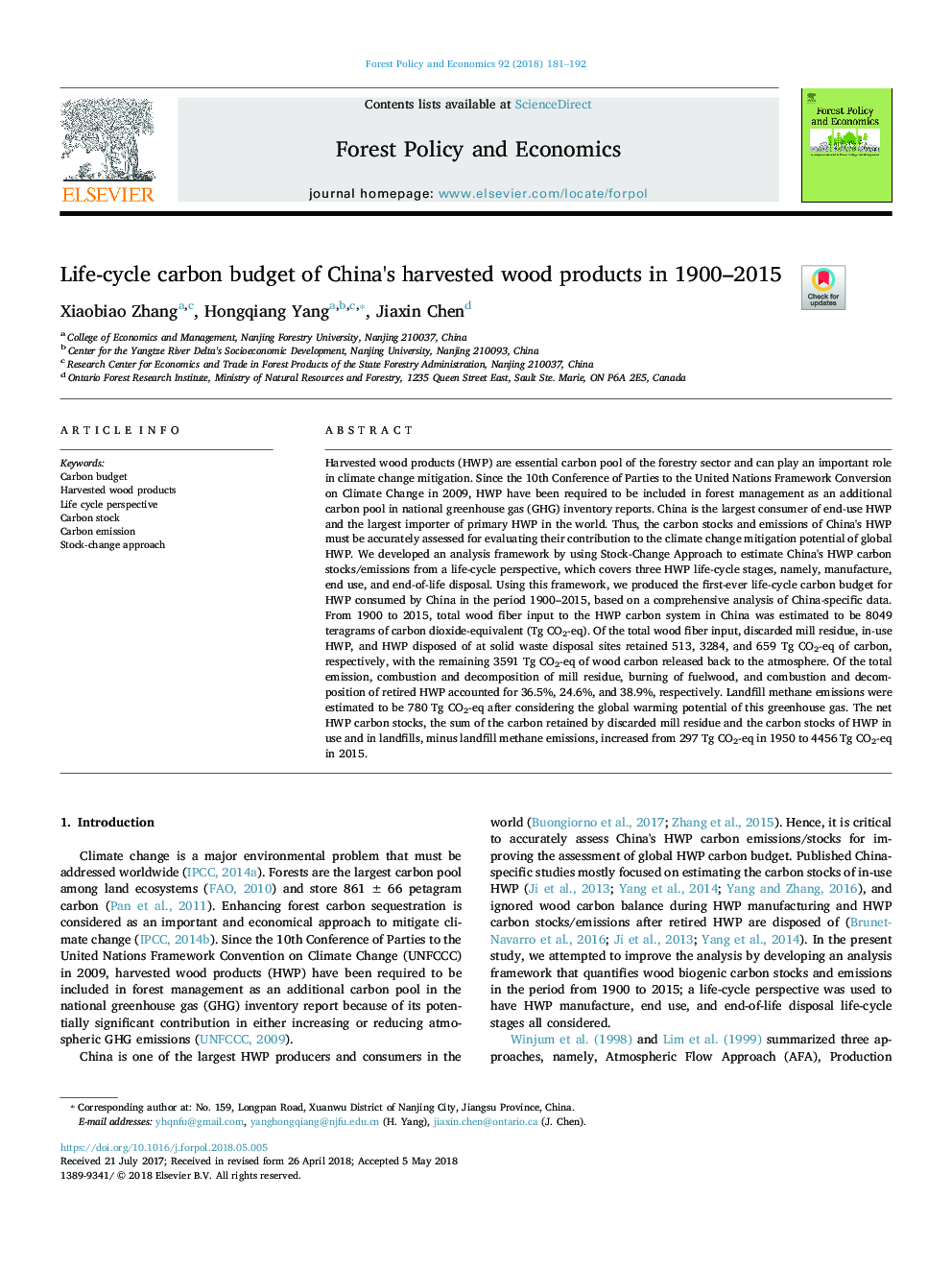| کد مقاله | کد نشریه | سال انتشار | مقاله انگلیسی | نسخه تمام متن |
|---|---|---|---|---|
| 6544747 | 1421646 | 2018 | 12 صفحه PDF | دانلود رایگان |
عنوان انگلیسی مقاله ISI
Life-cycle carbon budget of China's harvested wood products in 1900-2015
ترجمه فارسی عنوان
بودجه کربن در طول دوره چرنوبیلای تولید شده در چین در سالهای 1900 تا 2015
دانلود مقاله + سفارش ترجمه
دانلود مقاله ISI انگلیسی
رایگان برای ایرانیان
کلمات کلیدی
بودجه کربن، محصولات چوب برداشت شده، چشم انداز چرخه زندگی، ذخایر کربن، انتشار کربن، رویکرد تغییر سهام
موضوعات مرتبط
علوم زیستی و بیوفناوری
علوم کشاورزی و بیولوژیک
جنگلداری
چکیده انگلیسی
Harvested wood products (HWP) are essential carbon pool of the forestry sector and can play an important role in climate change mitigation. Since the 10th Conference of Parties to the United Nations Framework Conversion on Climate Change in 2009, HWP have been required to be included in forest management as an additional carbon pool in national greenhouse gas (GHG) inventory reports. China is the largest consumer of end-use HWP and the largest importer of primary HWP in the world. Thus, the carbon stocks and emissions of China's HWP must be accurately assessed for evaluating their contribution to the climate change mitigation potential of global HWP. We developed an analysis framework by using Stock-Change Approach to estimate China's HWP carbon stocks/emissions from a life-cycle perspective, which covers three HWP life-cycle stages, namely, manufacture, end use, and end-of-life disposal. Using this framework, we produced the first-ever life-cycle carbon budget for HWP consumed by China in the period 1900-2015, based on a comprehensive analysis of China-specific data. From 1900 to 2015, total wood fiber input to the HWP carbon system in China was estimated to be 8049 teragrams of carbon dioxide-equivalent (Tg CO2-eq). Of the total wood fiber input, discarded mill residue, in-use HWP, and HWP disposed of at solid waste disposal sites retained 513, 3284, and 659 Tg CO2-eq of carbon, respectively, with the remaining 3591 Tg CO2-eq of wood carbon released back to the atmosphere. Of the total emission, combustion and decomposition of mill residue, burning of fuelwood, and combustion and decomposition of retired HWP accounted for 36.5%, 24.6%, and 38.9%, respectively. Landfill methane emissions were estimated to be 780 Tg CO2-eq after considering the global warming potential of this greenhouse gas. The net HWP carbon stocks, the sum of the carbon retained by discarded mill residue and the carbon stocks of HWP in use and in landfills, minus landfill methane emissions, increased from 297 Tg CO2-eq in 1950 to 4456 Tg CO2-eq in 2015.
ناشر
Database: Elsevier - ScienceDirect (ساینس دایرکت)
Journal: Forest Policy and Economics - Volume 92, July 2018, Pages 181-192
Journal: Forest Policy and Economics - Volume 92, July 2018, Pages 181-192
نویسندگان
Xiaobiao Zhang, Hongqiang Yang, Jiaxin Chen,
